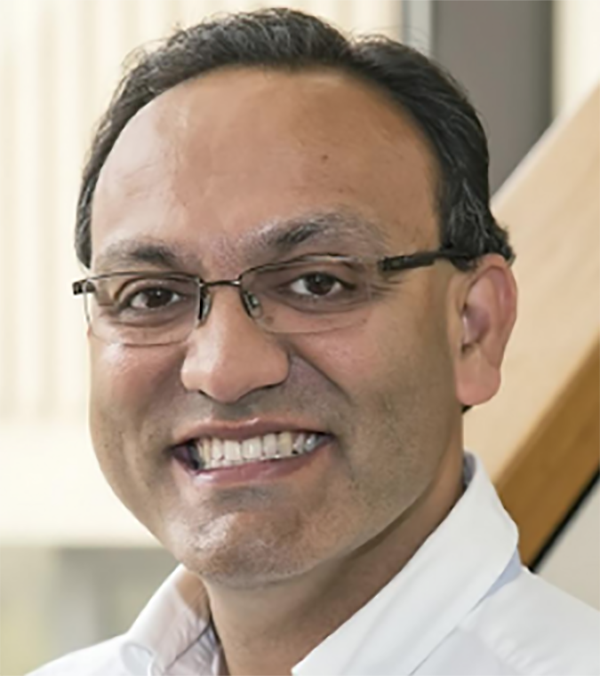NPRE 596 Graduate Seminar Series - Rajesh Maingi

- Sponsor
- NPRE 596 Graduate Seminar Series
- Speaker
- Rajesh Maingi, Department Head of the ITER and Tokamaks Department and the Deputy Department Head of NSTX-U Science, Princeton Plasma Physics Laboratory
- Cost
- Free and Open to the Public
- nuclear@illinois.edu
- Phone
- 217-333-2295
- Views
- 73
- Originating Calendar
- NPRE seminars
Liquid Metal Plasma Facing Components for Fusion Devices
Abstract: Liquid metals (LM) plasma-facing component (PFCs) hold the promise of more robust power exhaust than solids PFCs, and the prospect of improved confinement if liquid lithium (Li) is used. After discussing general considerations for LM PFC designs, the results of a three-year US-based liquid metal divertor PFC design program will be presented. Three complementary and coordinated activities entail: (1) design calculations of heat transfer and liquid metal (LM) MHD flow for concepts designs applicable to a fusion nuclear science facility (FNSF); (2) test-stand experiments to close LM science and technology gaps; and (3) linear flow configuration experiments with applied magnetic fields to validate LM magnetohydrodynamic (MHD) models and test PFC designs. For design calculations, we model a general flowing liquid lithium (Li) PFC, with a 10 MW/m2 incident heat flux removed by a thin flowing Li layer. The maximum surface lithium temperature is limited to 450°C, and gas cooling is provided on the back surface. We find that the most efficient heat transfer is via fast Li flow. The required flow speed to achieve 10 MW/m2 heat flux removal is 5-10 m/s for an open surface concept, and also with a porous top surface to inhibit droplet formation. Modeling of plasma response with the SOLPS-ITER code evaluated different wall/boundary shapes, and concluded that Li was entrained in the divertor over a wide range of Li flux released due to plasma-material interactions. Taken together, the MHD/heat transfer and plasma modeling indicate that a self-consistent design window exists for the FNSF input constraints. For experimental activities, work was initiated on the design and construction of liquid Li fill injectors, flow loops, wetting studies, and corrosion and embrittlement studies, including material compatibility between liquid Li and reduced activation ferritic martensitic steel F82H. Finally LM MHD code validation experiments were initiated in the Liquid Metal eXperiment Upgrade (LMX-U), which investigates flowing (~1 m/s) Galinstan, a gallium compound, for flow uniformity and surface wave formation, hydraulic jumps, and heat transfer. Generally similar codes, or in some cases the same codes, used for FNSF design above qualitatively reproduced experimental trends, e.g. the reduction of flow speeds from conducting side walls that induce MHD drag in Hartmann layers.. * Sponsored by Fusion Energy Sciences, Office of Science, U.S. Dept. of Energy.
Bio: Rajesh Maingi is the Department Head of the ITER and Tokamaks department and the Deputy Department Head of NSTX-U Science at Princeton Plasma Physics Laboratory (PPPL), and the lead investigator on a domestic liquid metal plasma-facing component development program. He has published research on the boundary plasma in many fusion devices, including Alcator C-Mod (Boston), ASDEX-Upgrade (Germany), DIII-D (San Diego), EAST (China), KSTAR (S. Korea), MAST (England), NSTX (Princeton), and TdeV (Canada), in 35 first author journal articles and more than 850 total publications. He was elected a Fellow of the American Nuclear Society in 2019, a Distinguished Research Fellow at PPPL in 2014, and a Fellow of the American Physical Society in 2009. In 2018 he received the Princeton University/PPPL Kaul Foundation Prize for Excellence in Plasma Physics Research and Technology Development. He received his Ph. D. in Nuclear Engineering from North Carolina State University in 1992. Following postdoctoral fellowships at the DIII-D device, he served on the research staff at Oak Ridge National Laboratory from 1997-2012, and joined PPPL as a Principal Research Physicist in 2012.